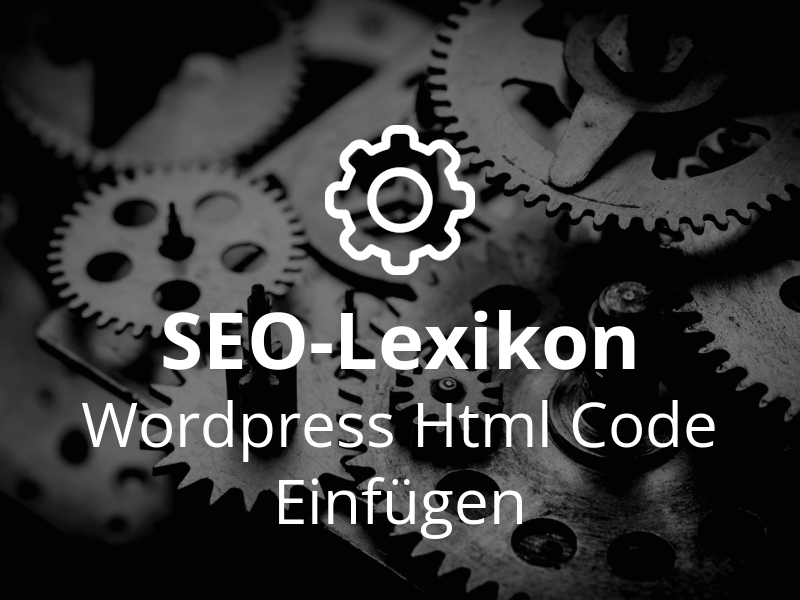What is HTML code in WordPress?
HTML code in WordPress is a basic element that is used to structure and display content on a website. WordPress normally generates this code automatically when posts and pages are created. Nevertheless, there are situations in which users need to insert specific HTML codes manually in order to use advanced functions or integrate external services.
Such individual adjustments are important when it comes to verifying the website or implementing tracking and marketing tools. The use of custom HTML makes it possible to flexibly adapt the website to external requirements, for example by integrating services such as Google Analytics or Facebook Pixel. With these customizations, operators can effectively manage their website and optimize interaction with visitors.
Purpose and necessity of the individual HTML code
A Individual HTML code in WordPress fulfills a specific function that goes beyond the automated possibilities: It enables Customized adaptationswhich are essential for certain requirements. A central purpose of such customizations is the link to external services. This is often necessary in order to use marketing or analysis tools such as Google Analytics or to integrate the Facebook Pixel. Such services require specific code snippets that are either stored in the <head>- or in the <body>-area of a website.
These customization options are particularly valuable for improving the performance of the website and implementing specific functions. In addition, individual HTML code is necessary in order to Domain verification for certain platforms. This is the case, for example, when website operators want to connect their website to services such as Pinterest. To activate such services, a small, user-defined HTML code often needs to be inserted to enable communication between the website and the external service.
Methods for inserting and editing HTML in WordPress
WordPress offers various methods for integrating and editing HTML code in websites, allowing for a wide range of customizations. One of the simplest options is the use of Pluginswhich allow even beginners to insert HTML snippets into the website without in-depth programming knowledge. Popular options include plugins such as "Insert Headers and Footers" and "Head, Footer and Post Injections", which provide a clear interface for inserting code into the website. <head> or <body> conveniently and securely.
For advanced users, the Manual integration in the themeSource code is available. This method requires in-depth knowledge of HTML and WordPress, but allows precise control of the customizations. The use of a child theme is essential here in order not to lose any changes in future updates of the main theme. Alternatively, HTML can also be integrated via the theme settings if they support it, although this is often limited to premium themes.
In the WordPress editor, especially in the Gutenberg editorHTML can be inserted directly into posts and pages. The "Custom HTML" option offers an easy way to create special structures, such as individually designed buttons or arrangements with <h1> and to implement. This flexibility within the editor is particularly helpful for detailed layout adjustments and enables creative content design.
Integration options and tools for HTML code integration
The Integration of HTML code in WordPress can be achieved through a variety of Integration options and tools that offer flexibility to both basic and advanced users. Plugins are a preferred method for inserting HTML code snippets simply and efficiently into the page. This practice is primarily suitable for users without extensive technical knowledge. Plugins such as "Insert Headers and Footers" facilitate the implementation of code in specific areas of the website by providing a user-friendly interface.
For websites with Premium themes there are often integrated options to edit HTML directly in the theme settings. These themes often offer advanced features that allow for visual customization and direct integration of HTML, eliminating the need for additional plugins. However, this method may be limited to the specific features of the theme in question.
Manual integration is also possible, using the HTML editor in WordPress. This option requires a certain knowledge of HTML and the underlying structures of WordPress themes. Care should be taken here to minimize the risk of causing structural problems in the website. The use of a Child Themes is strongly recommended to ensure that changes are not lost when the main theme is updated.
Important notes on the design and maintenance of HTML code in WordPress
The design and maintenance of HTML code in WordPress requires attention and care to ensure optimal performance and stability of the website. A crucial aspect of this is the writing of clean and efficient codewhich not only improves speed, but also the user experience. Bad practices such as unused or nested tags can increase loading times and should therefore be avoided.
To avoid potential problems Automatic backups an indispensable tool. These provide the security of knowing that changes can be undone if something goes wrong. In combination with the use of Child Themes protect the website from unintentional damage caused by code adjustments, especially during theme updates.
It is also important to access existing functions through Plugins that already offer HTML integration, such as for verification on platforms like Pinterest. These integrated solutions avoid unnecessary repetition and ensure that the website is not overloaded. Regular checks and adjustments to the code help to ensure that the website works in the long term and remains secure.
« Back to Glossary Index

